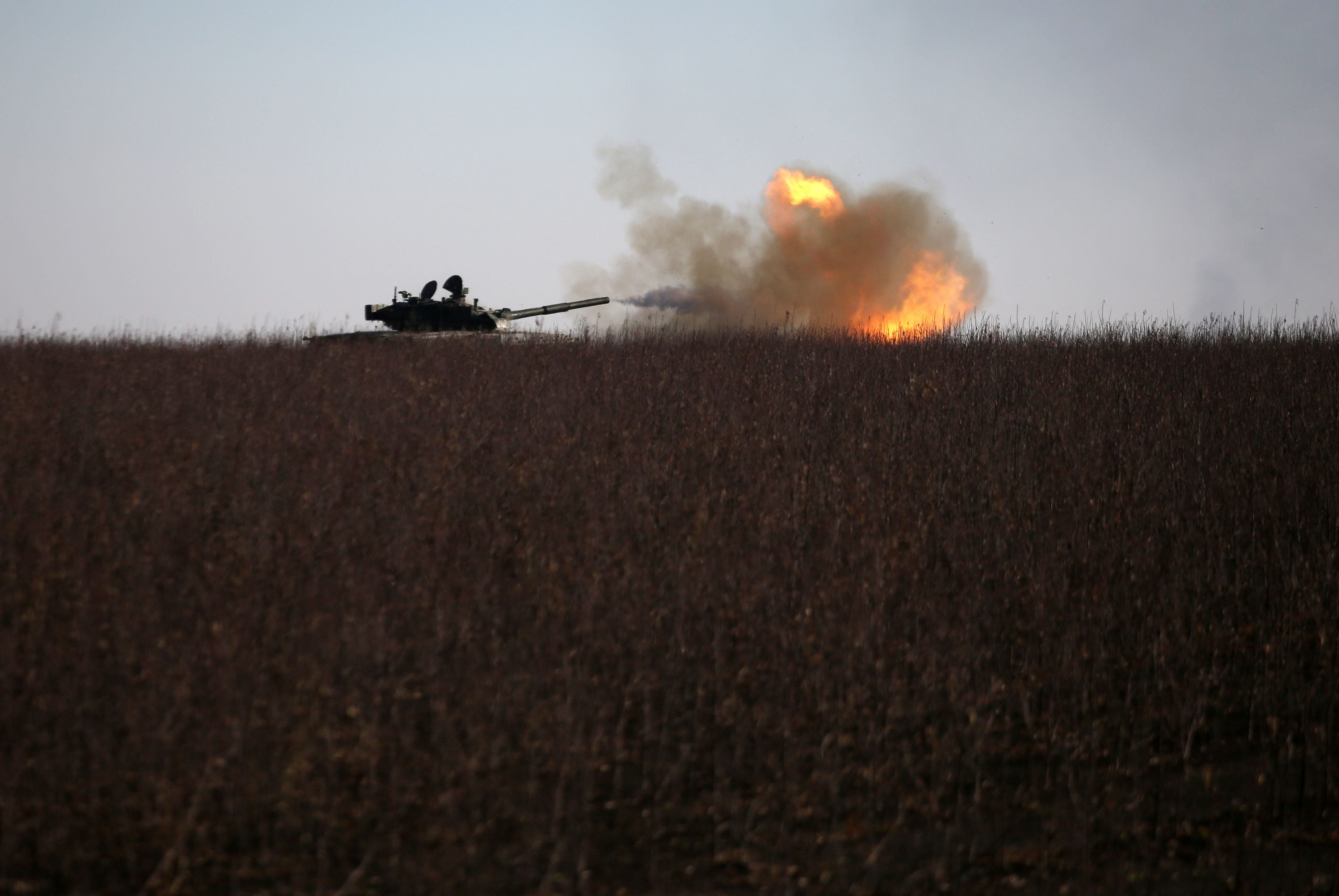Russian President Vladimir Putin may have expected a quick victory when launching his invasion of Ukraine, now almost two years ago. But with as many as 300,000 Russian troops killed or wounded and thousands of Russian weapons expended on the battlefield, Russia is now gearing up for a long war.
The Russian government proposed a new budget that shows the Kremlin is mobilizing its economy for a long war of attrition. Defense spending in the new budget will account for 29.4%, or nearly one-third, of Russia’s total budget expenditure in 2024.
“The budget’s structure shows that the main emphasis is on ensuring our victory — the Army, defense capability, armed forces, fighters. Everything needed for the front, everything needed for victory, is in the budget,” explained Russian Finance Minister Anton Siluanov.
But there are questions not only about whether the Kremlin can find the cash to fund such spending but also whether Russia’s defense-industrial base will be able to deliver.
RELATED

The Kremlin started the war with a formidable arsenal, greatly outnumbering Ukraine’s air, land and naval capabilities, which initially led many Western observers to believe that Ukraine would be quickly overpowered by the Russian military. Yet Russian losses in the war — both in terms of human casualties and materiel — have also been staggering, forcing Russia to pull aging equipment from its warehouses. The first several months of the invasion demonstrated that significant numbers of Russian-stockpiled equipment used in Ukraine were older and of lesser quality.
Furthermore, replacing equipment is challenging because higher-end Russian weapons systems, including main battle tanks, aircraft and missiles, have traditionally depended on critical components imported from the West, such as optical systems, bearings, machine tools, engines and microchips. The allied sanctions and export controls have constrained Russia’s access to these items, thus impacting the Kremlin’s ability to manufacture advanced weapons and equipment to supply its armed forces.
However, committed adversaries adapt. Russia has demonstrated a remarkable degree of adaptability to Western sanctions. It has established sanction-evading supply chains spanning several regions and continents, from Europe to the Indo-Pacific. It has found alternative suppliers such as China, which has sold millions of dollars’ worth of semiconductors, drones and other types of dual-use goods to Russia since 2022.
Russia is also pressing ahead with efforts to increase the domestic production of military hardware, including tanks, rocket launchers, artillery and missiles by more than twofold and, in certain cases, by tenfold — at least according to representatives of Russia’s state-owned defense conglomerate Rostec.

The Kremlin’s efforts also have limitations and potential pitfalls, ultimately impacting the quality of what Russia can produce. The United States and its allies are continuing to actively target Russia’s sanction-evading efforts by constantly expanding the sanctioned individuals and entities lists.
Moscow’s pivot to Beijing as an alternative supplier, while undeniably concerning, has its own challenges. According to U.S. Deputy Secretary of the Treasury Wally Adeyemo, China does not yet produce the advanced semiconductors Russia’s defense-industrial base requires, and about 40% of the less advanced microchips China sold to Russia have been defective.
Furthermore, the shift toward a war economy creates domestic risks to Putin’s government. While increases in state spending on defense have stimulated the economy, that has come at a cost to the budget. The weakening of the ruble makes importing critical components, whether through China or the black market, more expensive. Inflation is rising, stoked by high-priced imports, a pronounced labor shortage and a dramatic increase in government spending on the war.
In addition, Russian arms sales are declining significantly. Russia’s military-industrial base has refocused inward by prioritizing supplies for its troops in Ukraine. But this means the defense sector is now bringing in much less revenue and is a major drain on the Kremlin’s stretched budget. The Kremlin has started drawing down its rainy day fund to keep factories running. Thus, Russian spending will be all guns and little butter.
These limitations could create internal vulnerabilities on the Russian home front that Moscow will closely watch. The Kremlin put off another round of mobilization to boost manpower for the war, despite being stretched by Ukraine’s counteroffensive because of concerns of public backlash. The Russian government will be wary that a sluggish economy paired with high casualties could cause public support for a war of choice.
Ukraine’s ability to strike Crimea and Russian cities through its indigenous production of drones is another cause for concern. While the Kremlin’s strong autocratic rule may insulate Russian leadership from the whims of public opinion, it can never take its own stability for granted, as demonstrated by Yevgeny Prigozhin’s mutiny and the march toward Moscow this summer by his mercenary group Wagner.
Nevertheless, the Kremlin will be able to mass produce weapons, especially low-cost yet tactically effective weapons, such as explosive drones and gliding aerial bombs. This may give Russia an advantage as the war enters 2024, given Western defense production has not ramped up anywhere near the same degree.
With Moscow’s commitment to its war effort, the only way Kyiv will be able to maintain its defenses and retake captured territory from Russia will be through the uninterrupted delivery of Western military aid to Ukraine in 2024. Putin remains focused on reorienting Russia’s economy to support its defense-industrial base.
The onus is now on Ukraine’s international partners to do the same.
Max Bergmann is the director of the Stuart Center and the Europe, Russia, and Eurasia Program at the Center for Strategic and International Studies think tank. He previously served as a senior adviser at the U.S. State Department. Tina Dolbaia is a research associate with the CSIS program.







